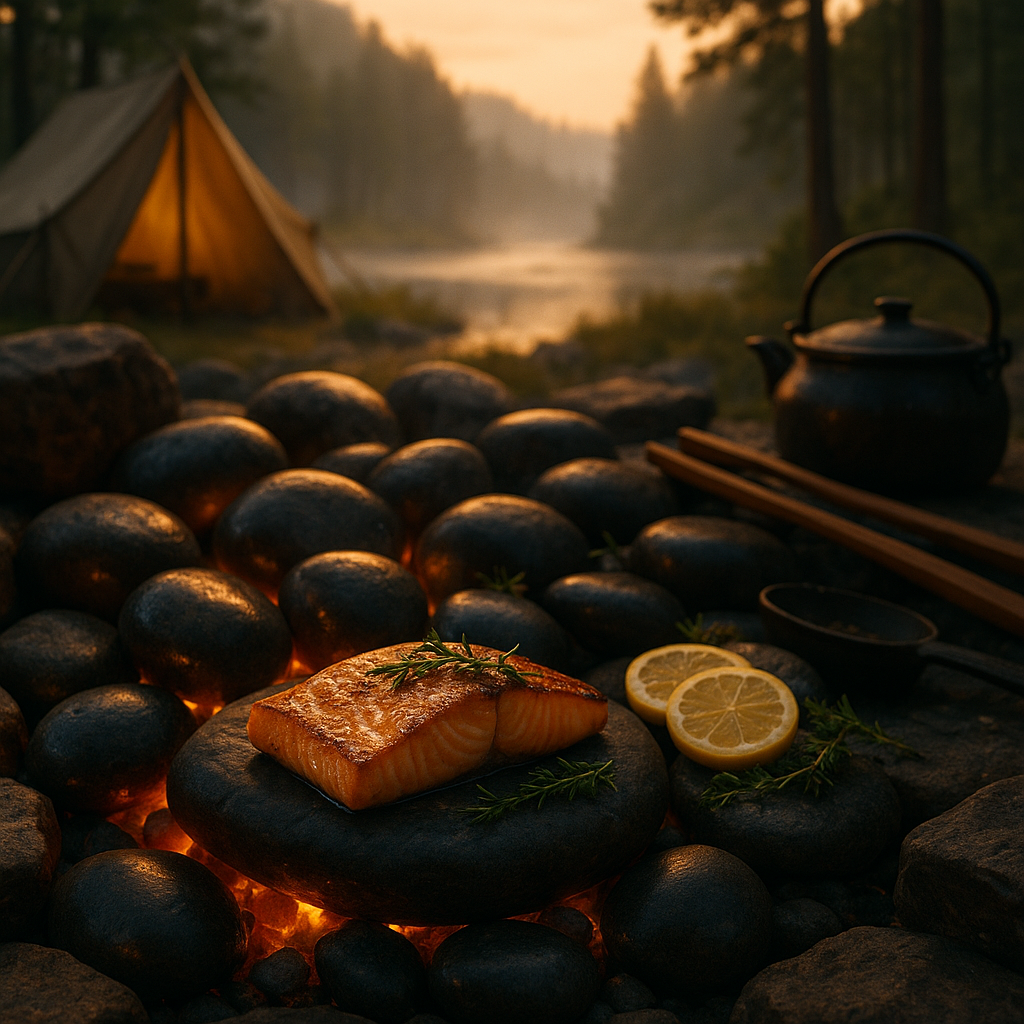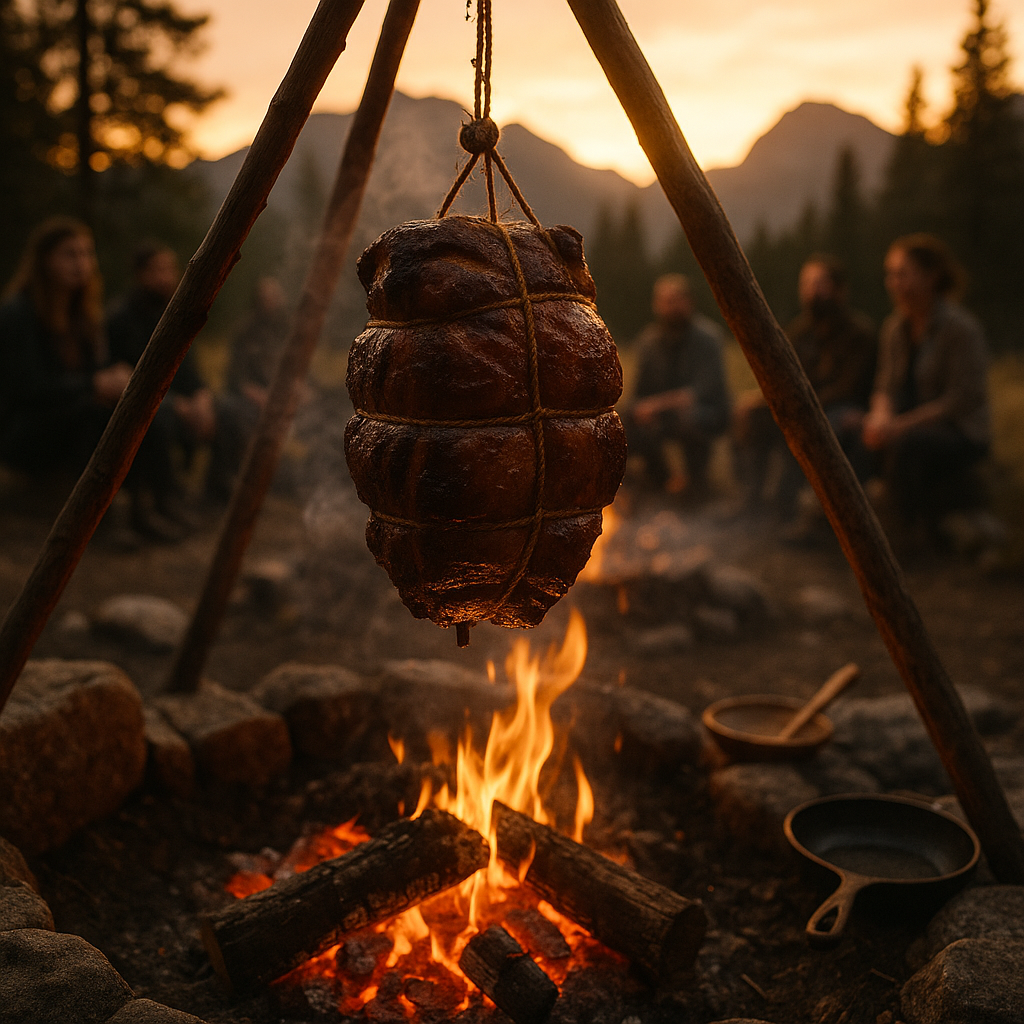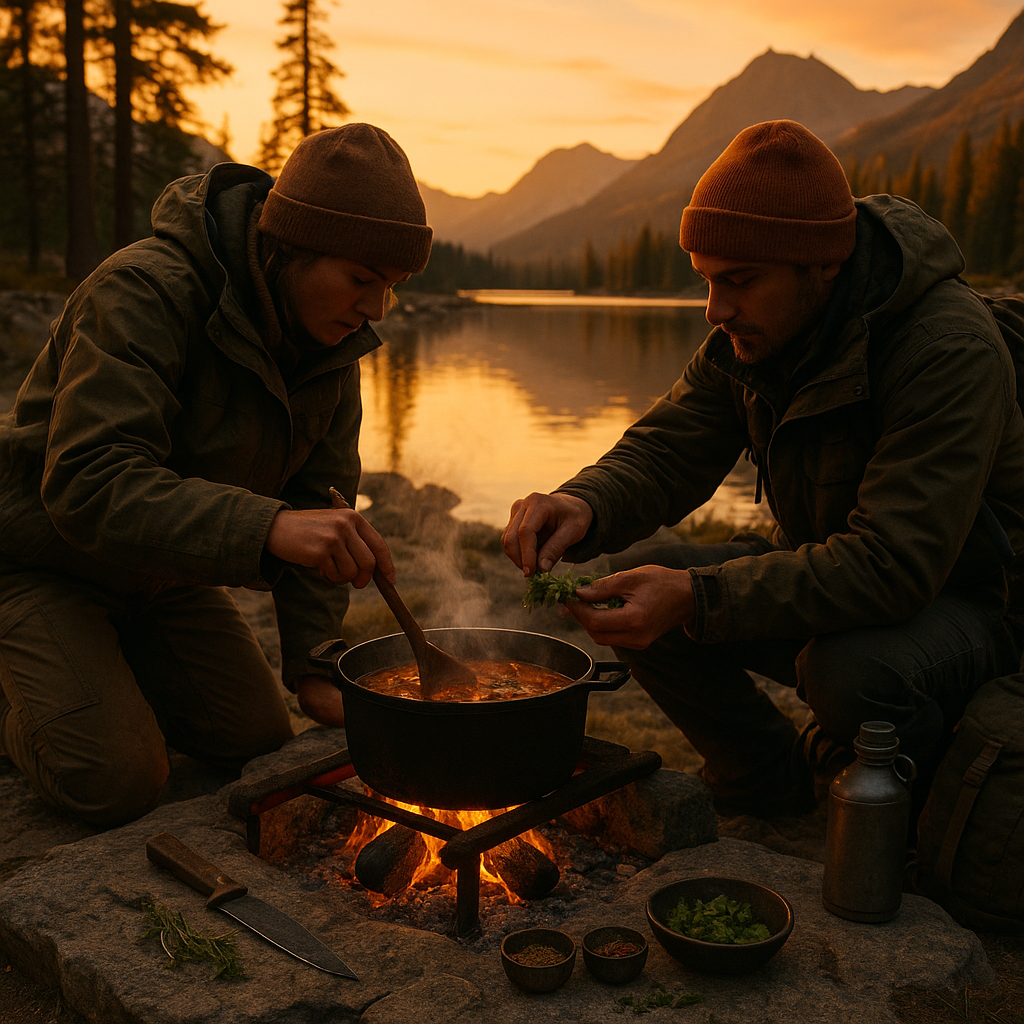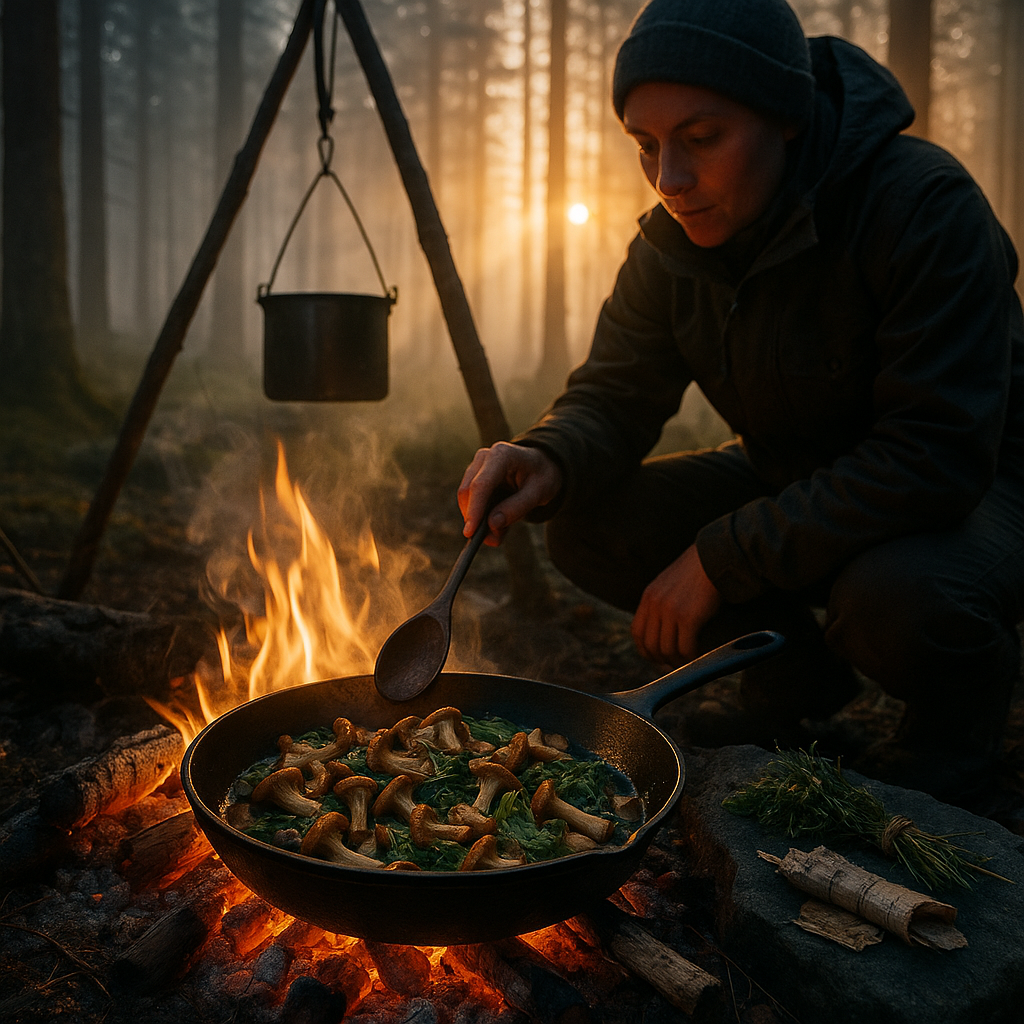Key Takeaways
- Water-worn stones deliver unmatched heat retention. Riverstones naturally retain and distribute heat evenly, making them ideal for cooking foods that require consistent temperatures or slow roasting.
- Ancient techniques meet modern tastes. Integrating riverstone methods into contemporary cooking unlocks unique textures and flavor profiles that cannot be replicated with modern tools.
- Safety first: Correctly selecting and preparing stones avoids accidents. Always choose non-porous, water-worn stones free from cracks to prevent breakage or explosions when heated. Thorough cleaning and gradual heating are critical for safe use.
- Versatile applications for diverse foods. Riverstones can grill, sear, or bake a variety of items, from meats and vegetables to flatbreads, creating a natural taste unachievable with traditional cookware.
- The hidden art of pairing stones with specific foods. Stone size, smoothness, and heat capacity directly influence cooking outcomes. Selecting the right stone for each dish can enhance both flavor and texture, whether roasting a trout streamside or baking bread on a mountain slope.
- Make cleaning and maintenance part of your technique mastery. Proper cleaning ensures the longevity and safety of your cooking stones. Scrubbing with natural brushes and storing in dry environments preserves their integrity, ensuring your riverstones are always ready for the next adventure.
- Bridge culinary eras with riverstone innovation. By combining old-world techniques with adaptive modern recipes, riverstone cooking creates a crossroads between tradition and modern gastronomic exploration, inspiring creative approaches in home kitchens and restaurant settings alike.
Exploring riverstone cooking allows you to connect deeply with natural culinary traditions while reimagining dishes with vibrant new textures and flavors. Prepare to uncover the full potential of this authentic method and elevate your next outdoor feast into a moment that lingers long after the embers fade.
Introduction
There is a quiet magic in the touch of a river-worn stone, its surface smoothed by centuries of flowing water, cool to the hand at dawn and radiating warmth beneath a sunset sky. In the heart of the wilderness, or even in your backyard, this humble stone can transform campfire cooking into an extraordinary experience that bridges the gap between ancient wisdom and contemporary taste. Riverstone techniques call us to slow down and savor each meal, offering flavors and textures that modern cookware simply cannot match.
Learning the art of riverstone cooking is more than reviving a time-honored method. It is a way of connecting with nature, unlocking fresh culinary possibilities, and embracing the mindful care these unique stones demand. As we gather around the fire, improvising with what the land provides and listening to the sizzle of wild mushrooms or trout on hot stone, we discover a sense of authenticity that brings new wonder to the table. Join in as we explore how to safely select, prepare, and master riverstone techniques to elevate your cooking beyond the ordinary and into the unforgettable.
The Essence of Riverstone Cooking
Ancient Wisdom Meets Modern Tables
Riverstone cooking embodies the raw elegance of Earth’s oldest culinary traditions. These water-polished stones, shaped by relentless rivers and shifting seasons, carry both geological memory and human history. Unlike modern cookware, riverstones have unique thermal properties: they heat gradually, maintain temperature consistently, and can impart subtle mineral notes that transform even the simplest ingredients into soulful meals.
Stay Sharp. Stay Ahead.
Join our Telegram Channel for exclusive content, real insights,
engage with us and other members and get access to
insider updates, early news and top insights.
 Join the Channel
Join the Channel
Across continents and cultures, communities have long trusted water-worn stones for preparing celebratory feasts and daily sustenance alike. From Indigenous pit baking in the Americas to stone-boiled stews on the Eurasian steppe, riverstones’ smooth surfaces and even heat transfer allow for gentle, reliable cooking. This time-tested natural engineering is re-emerging in today’s food scene, where chefs and kitchen adventurers seek authentic connections to ingredients and traditional techniques that reflect both heritage and innovation.
By honoring these ancient practices while exploring new recipes and methods, you create meals that are both rooted in place and alive with creative possibility.
Selecting and Preparing Riverstones
As you embark on riverstone cooking, the first step is discovering stones that are both safe and effective. This is where mindful selection and careful preparation come into play, ensuring every meal is steeped in both flavor and safety.
Finding the Perfect Stone
The journey of riverstone cooking begins with choosing stones that blend durability, safety, and culinary potential. Consider these key factors:
- Density: Heavier stones retain heat longer, providing steady cooking temperatures essential for even roasting or baking.
- Smoothness: Water-polished surfaces, free from cracks or roughness, reduce sticking and risk of shattering.
- Color: Darker stones, especially granite or basalt, often conduct and retain heat more effectively than lighter varieties.
- Size: Stones between 4 to 8 inches in diameter are versatile enough for searing a small steak, baking flatbread, or grilling vegetables.
Eco-friendly collecting is vital. Respect local regulations, avoid quarrying protected ecosystems, and remember that each stone tells a story of its own.
Preparation Protocol
Once gathered, stones demand a thorough cleansing and gradual conditioning before joining your campfire or stovetop:
- Scrub each stone vigorously with a stiff natural brush and hot water to remove dirt, algae, or organic residue.
- Boil the stones for at least 20 minutes. This step eliminates bacteria and any remaining organic material that could release unwanted flavors or toxins.
- Air dry the stones completely. Rushing this step can trap moisture inside, which could cause cracking when heated.
- “Season” the stones by coating them lightly with a high-smoke-point oil (such as grapeseed or avocado), then heat them slowly. This develops a durable, non-stick patina similar to cast iron.
Much like a trusted skillet, each riverstone evolves over time, its character deepening with every use and every meal shared along a mountain stream or windswept shore.
Mastering Safety
Riverstone cooking brings an authentic edge to your meals, but safety must be absolute. A disciplined approach to stone heating and handling ensures the experience remains both memorable and risk-free.
Understanding Stone Physics
Riverstones heat slowly and release warmth evenly, acting as natural thermostats. This gentle temperature curve is ideal for precise cooking but requires vigilance to avoid accidents:
- Never place hot stones into cold water or on wet ground; the sudden temperature difference can cause dangerous cracking.
- Always heat stones gradually, allowing at least 15 to 20 minutes for them to reach cooking temperature.
- Use an infrared thermometer to gauge surface heat, aiming for target zones appropriate to your recipe.
- Keep children, pets, and flammable materials well away from your stone heating area.
Risk Prevention
Develop a consistent safety protocol for every riverstone session:
- Set up your cooking station on stable, heat-resistant ground.
- Ensure ample ventilation, especially when using stones indoors or under semi-shelter.
- Carefully handle stones with tongs, gloves, or wooden paddles designed for high-heat use.
- Keep a fire extinguisher or abundant water source nearby; preparedness prevents accidents before they escalate.
- Stay present and attentive. Never leave heating stones unattended.
With mindfulness and respect, the ritual of preparation and safety becomes part of the adventure, a grounding moment before the feast.
Authentic Riverstone Cooking Methods
Exploring the diversity of riverstone traditions around the globe reveals a wealth of techniques adaptable to modern kitchens and wild backcountry settings alike.
Traditional Techniques
Stone Pot Cooking
In this ancient method, red-hot stones are carefully slipped into a pot or cavity filled with broth, wild greens, seafood, or grains. Used by cultures from Mongolia to the Pacific Northwest, the stones raise temperatures quickly, releasing deep, roasted flavors into stews and soups while creating gentle simmering without scorching delicate ingredients.
Open Stone Grilling and Searing
Spread evenly over coals or heated directly in the fire, stones become durable, low-maintenance griddles. At around 400 to 450°F, their even heat enables perfect searing of mushrooms, fish, or venison, preserving juiciness while forming a crisp crust. Some traditions place food directly atop stones; others wrap ingredients in leaves or bark for flavor and protection.
Pit Baking and Covered Stone Roasting
By layering heated stones beneath and above the food (fish, roots, tortillas, or even whole fowl), this method creates an insulated oven, locking in moisture and smoky, mineral-rich aromas.
Modern Adaptations
Modern cooks and chefs are reinventing riverstone methods to suit diverse settings:
Stay Sharp. Stay Ahead.
Join our Telegram Channel for exclusive content, real insights,
engage with us and other members and get access to
insider updates, early news and top insights.
 Join the Channel
Join the Channel
- Using multiple stones arranged at different temperatures for interactive, multi-phase meals (grill one side, finish





Leave a Reply